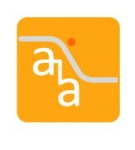Conceptual Design of an AI-Based Learning Assistant
Within interdisciplinary work processes, students are increasingly expected to develop transfer competences for complex, overarching content. We suggest the research-led development of a Digital Reflection Assistant. This AI-based tool is designed to foster students in developing and applying such competences. The core of this teaching innovation is a video-based assistant to be developed, which interactively combines a variety of learning and information formats and which serves the students as a personal, time- and location-independent reflection partner for the development of methodological competence. This enables abstract and theoretical contents to be exemplified by individual problems. Based on own evaluations and preliminary studies on the learning and working behaviour of the students, the tool is intended to promote cross-cutting understanding in interdisciplinary contexts as well as the development of integral solution processes in application-oriented project modules. The digital assistant serves the students as an individual, time- and location-independent reflection partner in the transfer process of the technical basics to specific, project-related problems. Key feature of the AI tool is an interactive video-supported linking of heterogeneous information sources and learning formats. For this purpose, the digital assistant will refer to so-called knowledge nodes which are embedded in a learning management system. Knowledge nodes are particular learning formats (quizzes, arithmetic exercises, learning videos, etc.) as well as information sources (lecture material, standards/rules, data sheets, etc.). The AI assistant should encourage and systematically guide students to rethink and further develop their actual ideas. It allows for anonymous, independent reflection on one's own planning, which reduces the obstacles to taking advantage of personal face-to-face correction during the presence phase. At the same time, the digital assistant can consolidate and deepen skills and thus provide case-based impressions of interrelationships and interactions.






























































